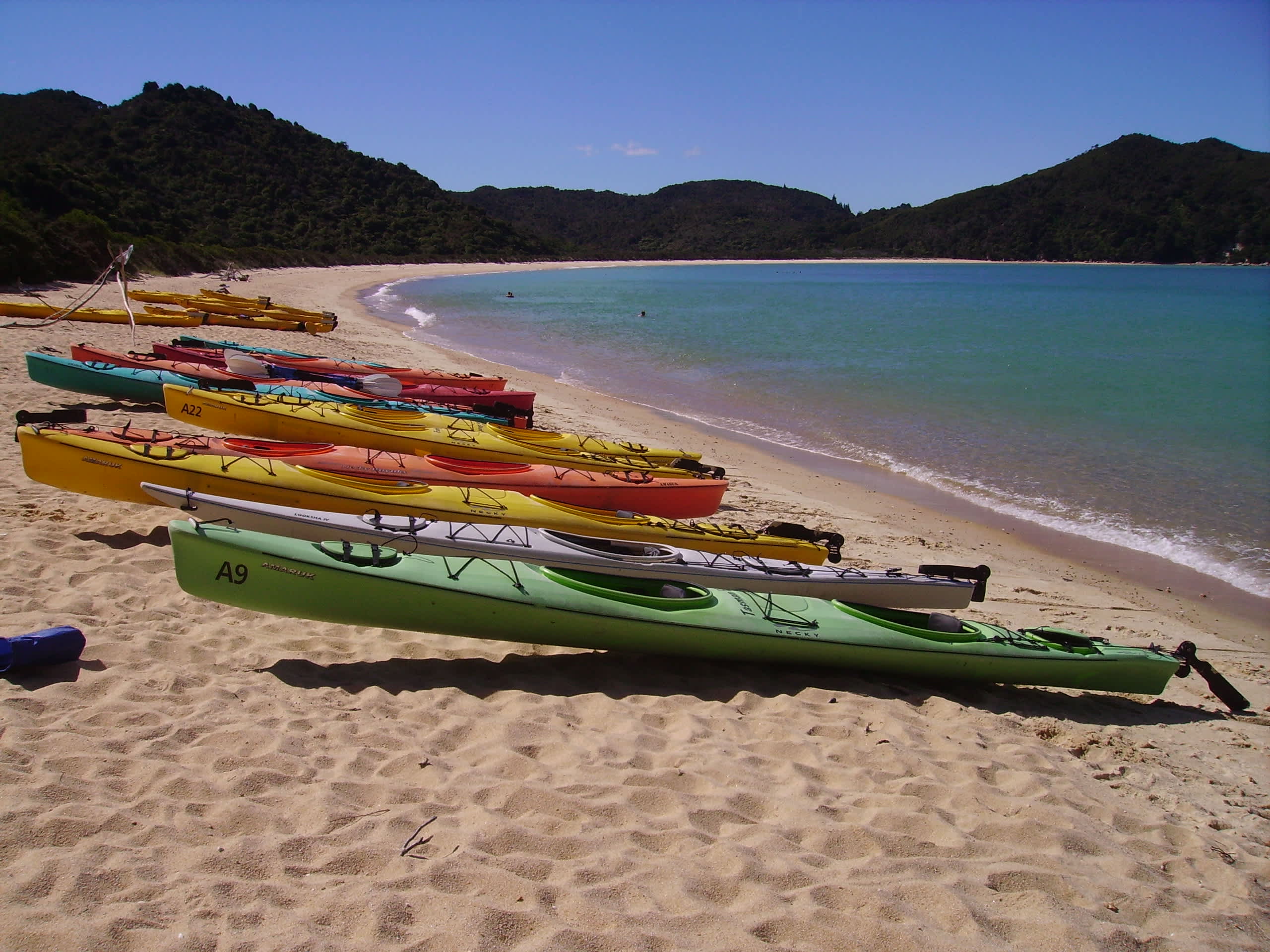Beginning Kayaking Techniques
OutdoorHub 06.24.11

Kayaking is a great sport, but, especially on rapids, it can be a dangerous one. So, before we talk techniques and lessons, let’s talk safety. Always, put on a life jacket before you get in your yak. If this sounds like too much of a chore,than it is probably because you remember the awkward, bulky life vest that your uncle made you squeeze into before you piled onto the pontoon boat at his summer cottage.
Good news: Modern life jackets are nothing like that. A good life jacket, USCG type III are recommended for Kayaking, will be much thinner and easier to move in than that foam straight jacket your uncle strapped you into; which is great because kayaking requires a lot of movement.
One last note: if you’re on the rapids (and you really shouldn’t be if you’re a beginner), wear a kayaking helmet.
Once you’ve got your safety gear on its time to get your kayak out on the water. I really recommend finding some still water to practice on, rather than jumping right into river kayaking.
Getting into your kayak can be tricky. Your goal is to keep your weight centered and low. If you aren’t steady and decisive in your movements the kayak will slide around like a banana peel in a Marx Brothers film. If you’re in shallow water it can be very useful to plant one paddle into the lake bottom, on the opposite side of the kayak that you are entering, this will help to keep in place, and step in one leg at a time.
Remember: kayaks aren’t canoes. It will be a much tighter fit. Ideally, the tight fit will result in good support for your back from the kayak seat. Also, as you get in, make sure that you can comfortably rest your feet on the foot pegs inside the front of the kayak. Once in, point your toes towards the outside of the kayak and your heels toward the center.
Now that you are in the kayak and situated, pull the paddle up and lay it across the kayak so that equal lengths are on both sides.
Before you start paddling lean back, relax a bit and stay calm. Don’t start until you are ready.
Grab the paddle with the back of your hands toward the sky and your thumbs underneath the paddle. The simplest kayaking stroke is the forward power stroke. Put one end of the paddle in the water at roughly the same horizontal location as your feet. Pull the blade back, through the water, until it is at your hips. Pull the paddle out of the water and repeat the process on the opposite side.
Don’t worry if it takes a while to get the hang of the forward power stroke. Just take your time, be persistent and try to enjoy the learning process. Once you get the motion and find your rhythm you’ll be gliding through the water in no time.
Of course, gliding through the water is only part of kayaking. You also need to learn how to turn your yak. The easiest way is to only paddle on the side of the kayak that you want to turn into. A faster way is to stick your paddle in the water vertically, holding it so the blade provides the most resistance possible, on the side you’d like to turn into. Most kayaks are so slim and light weight that you will be amazed at how easy they turn in the water.
To recap: You know how to be safe. You know how to get in the kayak. You know how to paddle and you know how to turn. All that’s left is getting back on dry land. Getting out is more or less like getting in, in reverse. Just paddle alongside the dock and tie off your kayak, or into shallow water. In either case you can use your paddle to stabilize the kayak again. If you’re at the dock you can grab a hold of that to help stabilize it too. Then, keeping your center of gravity low and your movements purposeful, get out by sliding butt first onto the dock and pull yourself out of the kayak. If you’re in shallow water you’ll want to carefully get out one leg at time while relying more heavily on the paddle to stabilize yourself and the kayak.
There you go. You know the basics to kayaking. Now get out there and enjoy this great sport!

